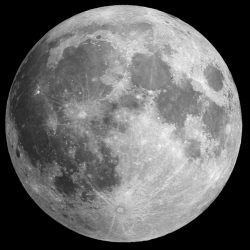
Previously, scientists had pinned down the moon’s birth at 100 million years after the solar system formed 4.568 billion years ago. New findings push back the moon’s birth date to just 40 million years after the solar system coalesced, researchers said yesterday (June 10) here at the annual Goldschmidt geochemistry conference.
The leading theory for how the moon was born suggests it originated from a Mars-size body slamming into Earth. Though the collision was only a glancing blow, the giant impact destroyed the impacting planet, called Theia. The resulting debris became the moon, though Earth also contributed some rubble.
To calculate when this giant impact took place, geochemists Guillaume Avice and Bernard Marty analyzed xenon gas trapped in tiny bubbles in ancient quartz from South Africa and Australia. The quartz bubbles from South Africa and Australia retain the chemical signature of Earth’s atmosphere from when the bubbles formed, like a time capsule from 3.4 billion and 2.7 billion years, respectively.
The amount of xenon isotopes (atoms with different numbers of neutrons) in the quartz is different than it is today. There’s more xenon in the older rocks, because the noble gas has slowly escaped into space since the Earth’s atmosphere formed.
